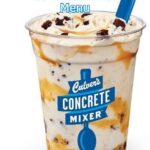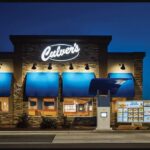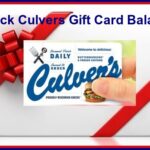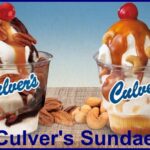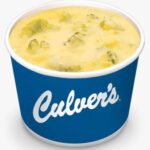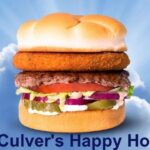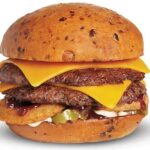Wisconsin has its own must-try local fast-food franchise that rivals California’s In-n-Out Burger and Texas’s Whataburger. Culver’s.
As stated by Culver’s, the restaurant business debuted in 1984 in Sauk City, Wisconsin, and today operates in 25 states.
Additionally to its traditional ButterBurgers and frozen custard, Culver’s is well-known for their deep-fried cheese curds.

The bits of the solid curd that first separate from the liquid whey are about the size of a grain of rice or a pencil eraser. The curds are next subjected to “cheddaring,” which involves slicing, stacking, and flipping the curds until they form rounded slabs.
The curds are now sliced into the fresh nugget-sized bits that are renowned for making a squeaking sound when you bite into them, rather than being molded into bricks or wheels for maturing.
La Grander Hillside Dairy in Stanley, Wisconsin, provides all of the cheese for Culver’s deep-fried cheese curds, which it began offering in 1997. You might want to give stopping to order some curds a second thought the next time you drive by a Culver’s.
Culver’s Curds Contain a Staggering Amount of Calories and Sodium
The nutritional information for Culver’s well-known Wisconsin cheese curds will make it clear why you might want to give them some additional thinking. A big basket of cheese curds has 1,020 calories and 2,460 mg of salt in it (per Culver’s).
The CDC recommends 2,300 milligrams of sodium for an entire day, thus a large curd order alone includes more sodium than that.
Some of us Simply Can’t get enough of the chain’s cheese curds, Even though they may not be the healthiest option.

Culver’s turned its April Fool’s joke into an actual burger, the “Curderburger,” which is one enormous fried cheese curd atop a deluxe ButterBurger, and introduced it to its menu last year after receiving overwhelmingly positive feedback on social media.
For those looking to cater an event or office lunch, Culver’s menu prices make it a cost-effective choice.
The Curderburger was only available on National Cheese Curd Day, which Culver’s (through Culver’s) created and is celebrated on October 15.
Culver’s sold more than 135,000 Curderburgers nationwide, and several of its locations broke sales records. However, the company hasn’t confirmed whether or not it will continue serving the cheesy craze in 2022.
The Taste and Texture of Culver’s Cheese Curds
One of the Best things about Culver’s Cheese Curds is that they taste and feel like nothing else. The coating on the outside is crunchy, and the gooey cheese inside is full of rich, creamy taste.

For Cheese fans, The mix of textures makes for a wonderful sensory experience. But it’s important To Remember that not everyone will like the way it tastes and feels.
Conclusion
People like Culver’s Cheese Curds because they taste Good and feel good in your mouth. But Before eating these deep-fried treats, it’s important to think about the nutrition, health effects, And other options.
You Can Enjoy the taste of Culver’s Cheese Curds while keeping your diet in balance if you make smart choices and eat in moderation.
Frequently Asked Questions (FAQs)
What are Culver’s Cheese Curds?
Culver’s Cheese Curds are bite-sized pieces of fresh, un-aged cheddar cheese that are breaded and deep-fried, resulting in a warm, crunchy snack. They are made from yellow and white cheddar sourced from Wisconsin dairy farms.
Where does Culver’s source its cheese curds?
The cheese curds served at Culver’s come from La Grander Hillside Dairy in Stanley, Wisconsin, a partner of the restaurant for nearly 20 years.
How are cheese curds made?
Cheese curds are created by curdling milk with specific additives, which separates the whey from the solids. The resulting curds are then cut, heated, and salted before being shaped into small pieces.
Why do cheese curds squeak?
Fresh cheese curds squeak when bitten into due to their unique protein structure. This squeaking occurs as the curd interacts with tooth enamel.
Are there different types of cheese curds?
Yes, cheese curds can be white or yellow. The color difference is usually due to the addition of annatto coloring but does not affect the flavor.

